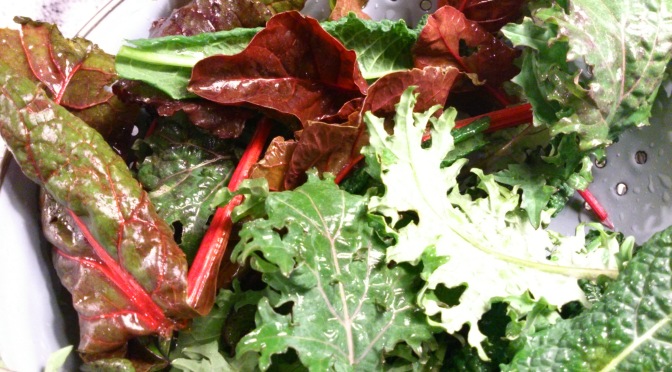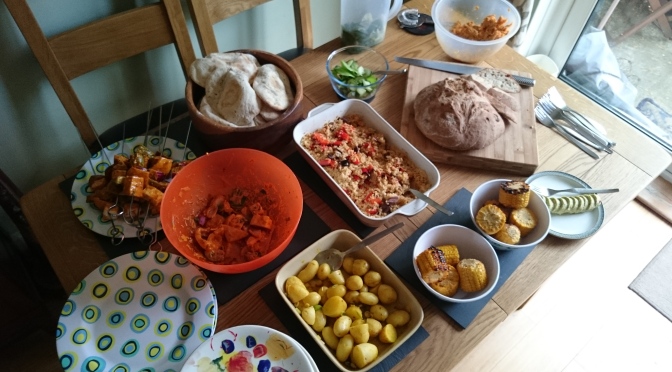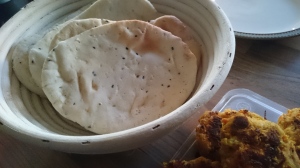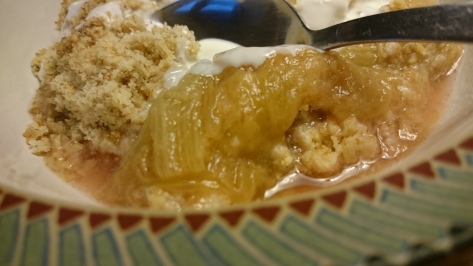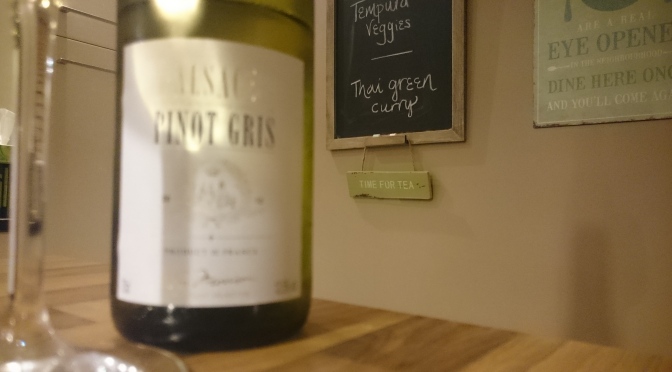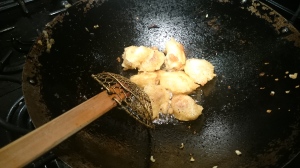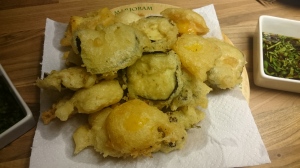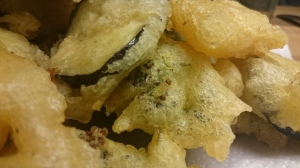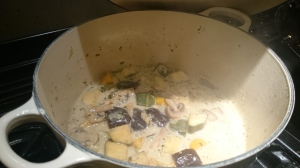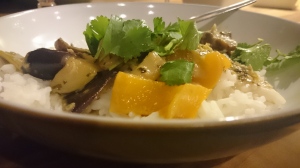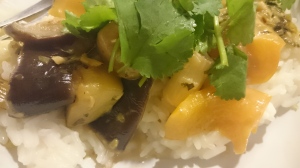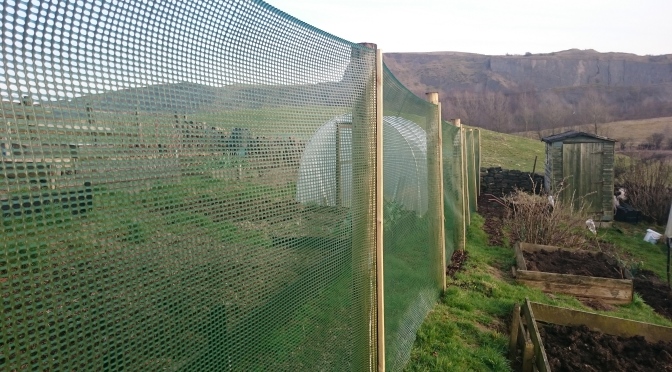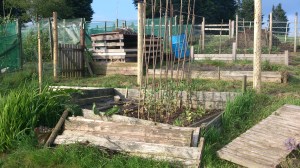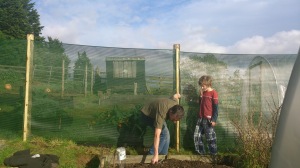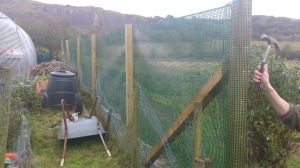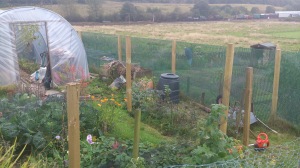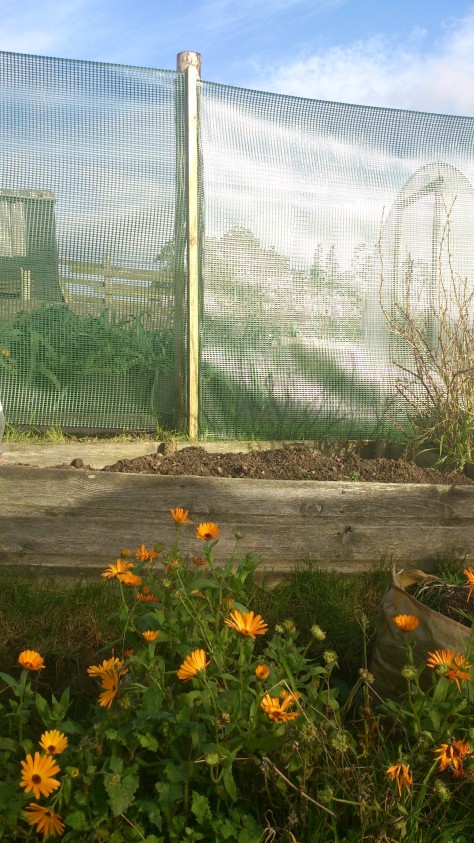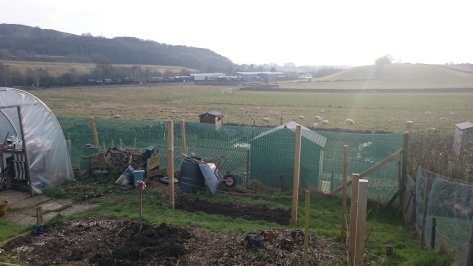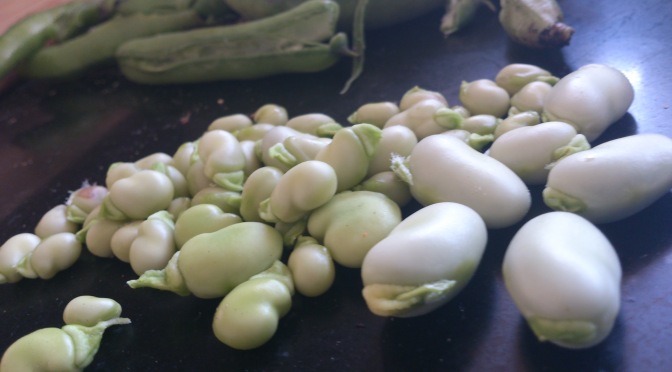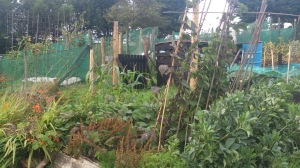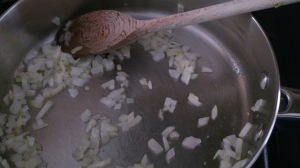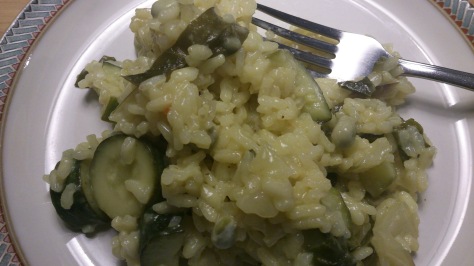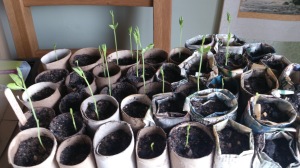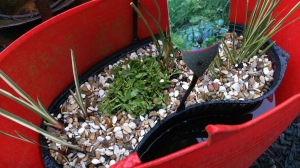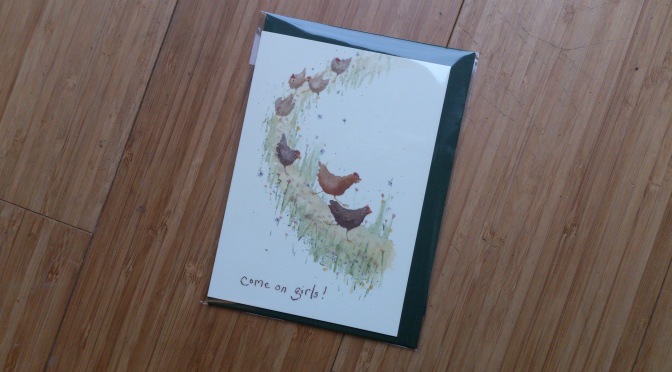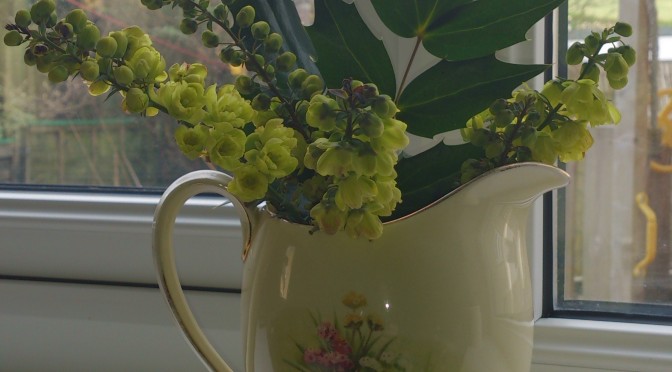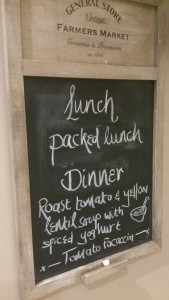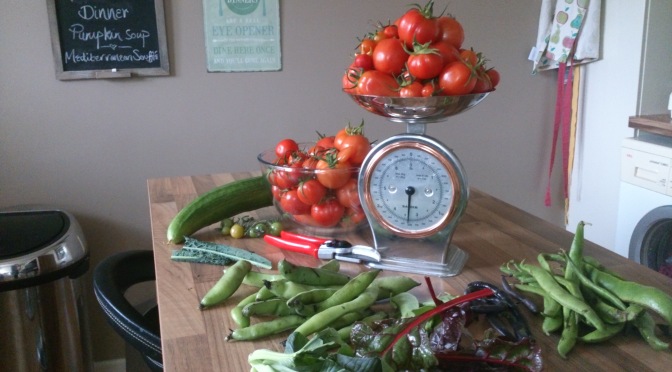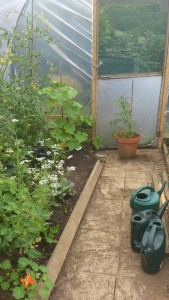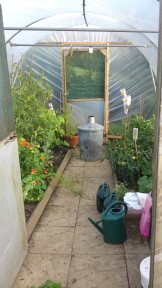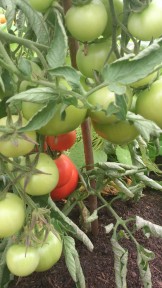It’s been a full-on bank holiday weekend. We have seen two of our favourite families; the Olivers on Friday night and the Osbornes Sunday night. The weather yesterday was not too bad, by British bank holiday standards, so we got out the barbecue and planned a sumptuous vegetarian feast. Now, one of the best things about spending all day cooking for friends, is that dinner the next day is always fast to prepare and delicious.
We got up to the allotment for about five hours this afternoon and left it feeling like it was finally looking not too bad for May. We emptied the loam from the wooden compost area, filled it with manure to rot down, got the runners and broad beans into the bean bed, got the red onion sets in and transplanted the parsnips, wired the raspberry bed posts even higher, attached the guttering that fell of the shed to the polytunnel frame and had a fire! Okay, stuff that should have mostly been done in March, but at least we have some greenery in some of the beds now. 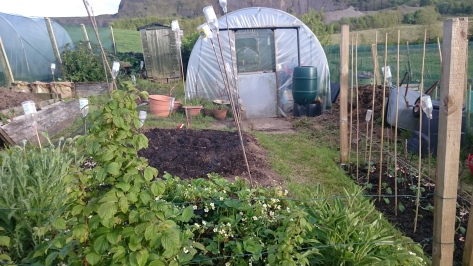
The strawberries are fully in flower, and we have some ripening in the polytunnel, the raspberry flowers are developing and the rhubarb is looking plump. So we cut some off to bring home for crumble. Burgers and crumble not a classic combination, but so quick, simple and fresh tasting.
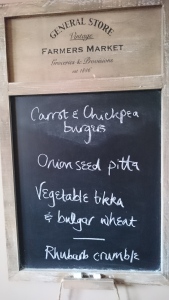 The burger mix, pitta breads, bulgur wheat salad and tikka marinated vegetable skewers were left over from yesterday’s dinner.
The burger mix, pitta breads, bulgur wheat salad and tikka marinated vegetable skewers were left over from yesterday’s dinner.
The vegetables were cooked as a curry and served with the bulgur instead of rice, and the burgers were fried on the hob – much faster than trying to barbecue although they suit the char-grilled taste well.
Carrot & Chickpea burgers:
- 750g carrots, peeled and grated
- 1 can chickpeas, drained and rinsed
- 1 small onion, roughly chopped
- 2 tbsp tahini paste
- 1 tsp ground cumin
- 1 egg
- 3 tbsp olive oil
- 100g wholemeal breadcrumbs
- zest 1 lemon, plus 1 tsp juice
- 150ml pot natural (or soya) yogurt
Based on the bbc good food recipe –
Method:
- Put 1/3 grated carrot in a food processor with the chickpeas, onion, 2 tbsp tahini, cumin and egg. Whizz to a thick paste, then scrape into a large bowl. Heat 1 tbsp oil in a frying pan, tip in the remaining carrot and cook for 8-10 mins, stirring until the carrot is softened – it will become more golden as it is cooked. Add this cooked carrot to the whizzed paste with the breadcrumbs and lemon zest. Add seasoning, then mix together well with your hands.
- Divide the mixture and shape into burgers (we got around 12 small burgers from this quantity). Cover and chill until serving. Mix the yogurt with the remaining tahini and lemon juice, then chill.
- Fire up the barbecue, or heat a non-stick frying pan and brush the burgers with the remaining oil. Cook the burgers for 5 mins on each side, until golden and crisp. We served with pitta breads straight from the oven.
While the burgers were in the pan, the rhubarb was washed, chopped and put on the hob. It was not too long a wait for piping hot crumble, again, courtesy of a quick search on the BBC good food website.
Rhubarb oat crumble:
- 500g rhubarb, chopped into chunks the length of your thumb
- 100g golden caster sugar
- 140g self-raising flour
- 50g oats
- 85g butter, chilled (or vegan equivalent, like Pure)
- 50g light brown muscovado sugar
- Tip the rhubarb into a saucepan with the sugar. Cover and simmer on a very low heat for 15 mins. When soft and sweet enough, pour the rhubarb into a medium baking dish.
- Heat oven to 200C/180C fan/gas 6. To make the topping, rub the flour and butter together until you have a soft, crumbly topping. Then add the sugar and oats, mixing together by hand or machine. Spread the topping over the rhubarb and bake for 30 mins or until golden brown on top.
We served with a spot of Alpro soya cream.
A delicious end to a wonderful weekend full of friends, laughter, fresh air and good food.


